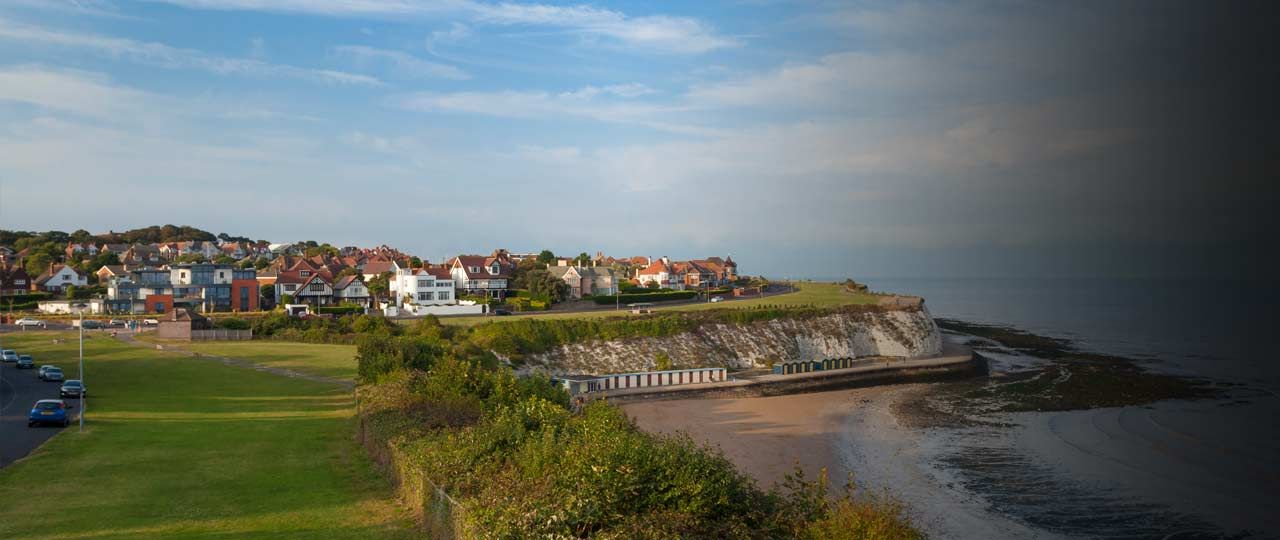
Edward Church
Senior Director, Estate Agency


Senior Director, Estate Agency
For many of us, waking up to the sounds of seagulls and waves gently lapping against the shore is our idea of heaven. It reminds us of carefree childhood holidays when we built sandcastles on the beach and ate fish and chips out of the wrapper.
Buying a home by the sea is a way to recreate those simpler times and escape the frenetic pace of modern life. A place to switch off, unwind and breathe in some invigorating fresh sea air.
Our latest Waterside Survey shows that coastal living is not just an aspiration for those nearing retirement. In fact, more than a quarter of under-35s and 36 per cent of 35 to 39-year-olds are actively looking to move to a waterside location within five years. If you’re considering buying a coastal home, here are a few things to think about before making this type of investment.
Up-and-coming areas
To live by the sea, you’d normally expect to pay a premium, especially in holiday home hotspots such as South Devon and Kent. But if you go for somewhere on the up that has yet to reach its peak, you could bag a bargain that will dramatically appreciate in value in the next few years.
In the South West, for example, the North Devon resort of Bideford is more affordable than similar properties on the English Riviera, while in the South East, Broadstairs is a great alternative to Dover and Margate as it’s only an hour and 20 minutes from London by high-speed train.
If you’re looking for somewhere inexpensive in the north, Amble in Northumberland and Withernsea in East Yorkshire are among the best places to live.
Transport links and local amenities
You might be well-acquainted with the area you want to buy in, having spent family holidays there in the past. But if you’re considering somewhere that you haven’t spent a great deal of time in, it’s vital you do your homework on the neighbourhood to make sure it’s a fit for your lifestyle, even if you’ll only be spending weekends there.
Is the property you have your eye on in a convenient location that isn’t too cut off from civilisation? Is it close to good transport links? Small villages can often feel isolated, especially in winter, while remote places can be tricky to get to. Is there a hospital and shops nearby, as well restaurants and entertainment venues? If you need to let out the property, will it be popular with holidaymakers? It’s worth noting that over the summer, the coast comes alive with staycationers and many Airbnb’s adapt their prices accordingly. Work out what’s most important to you and make a wish list.
Protection from the elements
Coastal homes tend to have different maintenance issues to other properties because of how they’re affected by the weather and elements. For instance, they can be susceptible to damage from salt air corrosion. Rusted metals and rotten wood are what to look out for when viewing seaside homes.
Once you’ve had an offer on a house accepted, be sure to have a property survey carried out, preferably a full building survey. A chartered surveyor will not only look for signs of age-related wear and tear, but damage caused by the sea too.
If you discover that the home has been flooded in the past, it might be best to walk away. Flood waters can cause serious damage to the foundations, electrical systems and woodwork, and can be expensive to repair.
Distance from the sea
While coastal homes with sea views are highly desirable, you might be better off choosing a property that doesn’t sit directly on the beachfront. Beachfront property on the prime Kent coast for example, trades at a premium of at least 50% above the same house inland and tends to sell exceptionally quickly. You’re likely to get more for your money if you opt for a house that is set back a few streets from the front. A seafront property could also be more expensive to insure.
And if you’re planning to expand your family in the near future and need a home with extra bedrooms and somewhere for the kids to play, you might want to consider a more spacious property with a garden and garage.
Two of our favourite homes in Broadstairs:
Harbour Rise, Pier Approach, Broadstairs, Kent CT10
Harbour Rise is a hidden gem, very privately situated in the heart of the town, only a moment from the beach and with superb sea views. The well-appointed house enjoys fine sea views, with scarcely any other property in sight. Concealed behind walls and mature hedges, the house nestles below ‘Bleak House’, made famous for its Dickensian connections.
4 The Point, 23 Western Esplanade, Broadstairs, Kent CT10
4 The Point is a stylish first floor apartment set in a contemporary Art Deco-style building recently constructed by a local developer, Blueberry Homes. Situated in a prime coastal position, just 100m from the beach, and with picturesque views over the English Channel, the apartment benefits from a south-facing private balcony, ideal for al-fresco dining whilst soaking up the sun and enjoying the fresh sea air.